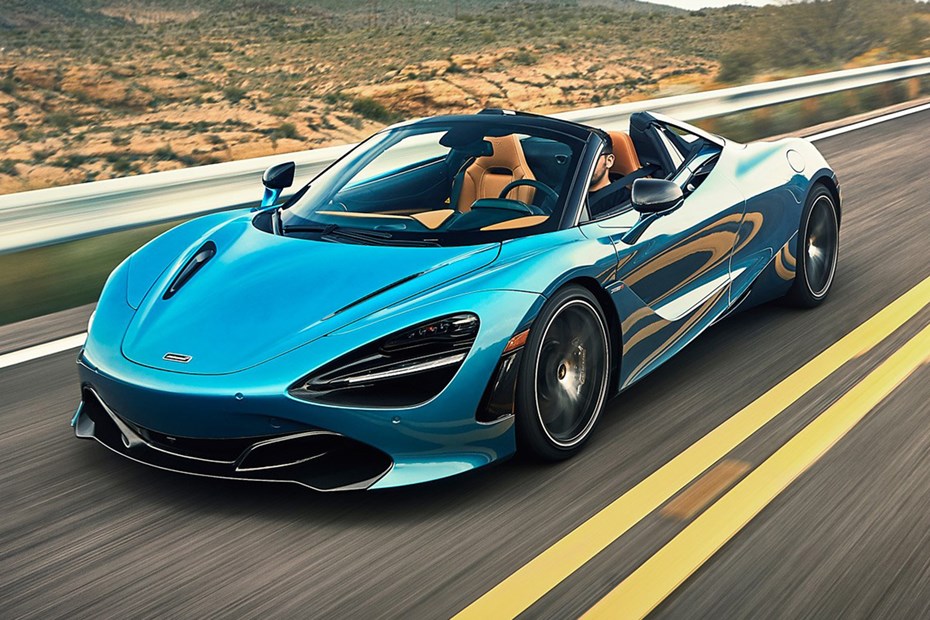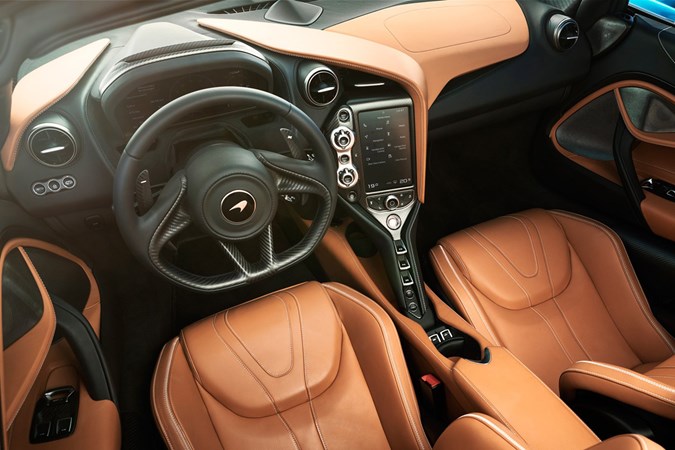McLaren 720S Spider review

At a glance
| Price new | £252,015 - £258,915 |
|---|---|
| Used prices | £91,940 - £206,030 |
| Road tax cost | £620 |
Get an insurance quote with

|
|
| Fuel economy | 23.1 mpg |
| Miles per pound | 3.4 |
| Number of doors | 2 |
| View full specs for a specific version | |
Available fuel types
Petrol
Pros & cons
- Incredible performance
- Fabulous comfort, handling and steering
- Fast-operating and quiet folding roof
- Very expensive
- Pricey options
- Perhaps a Ferrari is prettier
Overview
McLaren Automotive’s first car, the 12C, went on sale only eight years ago. Since then, Britain’s newest supercar maker has launched a succession of hugely impressive Ferrari-rivalling (and sometimes Ferrari-beating) sports cars, from the P1 and Senna ‘hypercars’ to the £150,000 570S.
The 720S is the latest in its Super series – the model line that sits between the Sports series (570S, 570GT, 600LT) and Ultimate series (Senna and P1). The new £237,000 Spider version competes most keenly with the comely Ferrari 488 Spider and the V10-powered Lamborghini Huracán Spyder, although its performance is closer to the more track-focused 488 Pista Spider.
McLaren 720S: a very special Spider
Most convertibles sacrifice speed, handling and ride on the altar of wind-in-the-hair driving fun. They’re heavier, to beef up the chassis to compensate for the loss of the roof’s rigidity. This extra weight always blunts performance, even if only marginally. Plus, roadsters still typically flex more than hardtop coupés, so never quite offer the handling, agility or ride comfort.
But McLaren Spiders use carbonfibre F1-style chassis, and that extra strength (and lightness) makes a big difference. No extra strengthening is necessary to maintain rigidity. So the new 720S Spider has all the performance and handling prowess of the hardtop 720S – and adds sun-kissed sensuality. In effect, its range of capabilities and appeal is broadened.
Spider: just as brilliant to drive as the Coupe
No surprise, this is a very fast car – as 720hp in a vehicle weighing just over 1400kg would suggest. But just how fast may astound. 0-60mph acceleration is the same as the three-times-the-money and more powerful Senna hypercar (2.8sec) and the same as the 720S Coupé. Top speed is also the same as the 720S Coupe´– an amazing (though barely usable…) 212mph, roof up. Unusually, the aerodynamic efficiency with the roof in place is identical to the Coupe´– so is the profile and styling.
Apart from the monumental speed and acceleration (no equivalently priced car is faster), it also rides with astounding suppleness, thanks to McLaren’s innovative hydraulically controlled active suspension. No supercar can match the 720S’s combination of fast car stability and speed, plus low-speed ride comfort. The Comfort mode matches the ride suppleness of many luxury saloons. Sport prioritises handing, while the Track mode ensures maximum outright performance and grip.
The steering is electro-hydraulic. McLaren still believes no fully electric steering system has sufficient clarity of feel. It is probably the best steering system of any production car.
Luxurious cabin works on all levels

Like most pricey supercar rivals, the 720S Spider is luxuriously equipped. There are fine leather hides skinning seats and cabin, an air-conditioning system that automatically compensates roof up or down, and a new infotainment system that is way better than the outgoing 650S Spider’s system, and better than most supercar rivals – but still behind the offerings of the best premium saloons.
The cabin is quiet inside, in Comfort, cruising on the motorway. The folding roof works quickly (just 11 seconds to open or close), is quiet in operation, and can be activated up to 31mph.
Our test car had an optional electrochromic roof, that can change from transparent to tint at the touch of a button. Although that costs a hefty £7,500. Other pricey options on our test car included more than £20,000 of exterior carbon trim, and almost £6000 of interior carbon embellishments. Our car’s standard £237,000 retail price had blossomed to more than £310,000!





